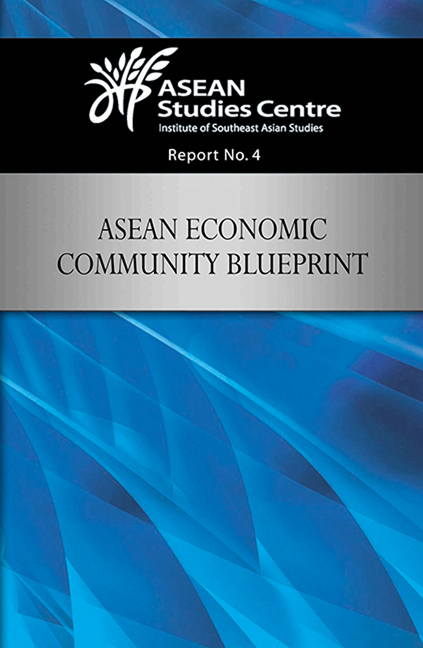Book contents
- Frontmatter
- Contents
- Introduction
- I ASEAN Roundtable 2008: ASEAN Economic Community Blueprint
- II Background Papers
- 1 Tackling Non-Tariff Barriers in ASEAN
- 2 Regional Framework for Competition Policy and AEC
- 3 Achieving an Integrated ASEAN Economic Community: The Role of Infrastructure Development?
- 4 How Less Developed Economies in Southeast Asia Can Participate in Production Networks: Industrial Policy in the WTO and FTA Era
- Annex I Programme of the ASEAN Roundtable 2008
- Annex II List of Participants
- Annex III List of NTBs Affecting the ASEAN Priority Sectors for Integration
3 - Achieving an Integrated ASEAN Economic Community: The Role of Infrastructure Development?
from II - Background Papers
Published online by Cambridge University Press: 21 October 2015
- Frontmatter
- Contents
- Introduction
- I ASEAN Roundtable 2008: ASEAN Economic Community Blueprint
- II Background Papers
- 1 Tackling Non-Tariff Barriers in ASEAN
- 2 Regional Framework for Competition Policy and AEC
- 3 Achieving an Integrated ASEAN Economic Community: The Role of Infrastructure Development?
- 4 How Less Developed Economies in Southeast Asia Can Participate in Production Networks: Industrial Policy in the WTO and FTA Era
- Annex I Programme of the ASEAN Roundtable 2008
- Annex II List of Participants
- Annex III List of NTBs Affecting the ASEAN Priority Sectors for Integration
Summary
Introduction
One of the key goals of the Asia-Pacific region is to eradicate poverty. Regional cooperation and integration (RCI) among Asian countries is an important platform to complement efforts at the country level. By working together, countries in Asia and the Pacific can unlock their vast economic potential, achieve sustained, rapid growth, and reduce poverty.
Infrastructure development is playing an important role in the realization of the goal of Asian trade and economic integration and thus supports sustainable economic growth. The development of appropriate infrastructure, particularly rural infrastructure, can assist in reducing poverty through inclusive growth. However, it is also important to take note that the recent ongoing global financial crisis originating from the U.S. financial markets have unleashed a wave of uncertainty and this is expected to have implications on Asian economies. The fallout from the global market turbulence shows how closely linked they are to the global markets. At this juncture, infrastructure, particularly cross-border infrastructure, is going to play an important role in addressing expected falling growth in Asian — including ASEAN — economies through further enhancing physical connectivity and the sharing of resources, such as energy, water, capital, services. The future of Asia's success depends on infrastructure development and maintenance in a cost-effective manner.
Association for Southeast Asian Nations (ASEAN) is composed of Brunei Darussalam, Cambodia, Indonesia, Lao PDR, Malaysia, Myanmar, Philippines, Singapore, Thailand, and Vietnam. It was formed in 1967 with the objective of accelerating economic growth, social progress and cultural development as well as to promote regional peace and stability through abiding respect for justice and rule of law in the relationship among countries in the region, and adherence to the principles of the United Nations Charter.
In 1992 the ASEAN Free Trade Area (AFTA) was established. The ASEAN Vision 2020 was adopted in 1997 which agreed on a shared vision of ASEAN as a group of Southeast Asian nations: outward looking, living in peace, stability and prosperity, bonded together in partnership in dynamic development and in a community of caring societies. Its goal is to change ASEAN into a stable, prosperous, and highly competitive region with equitable economic development, and reduced poverty and socioeconomic disparities (ASEAN Overview 2008). In order to pursue this vision, regional cooperation and integration is an important platform to complement efforts at the country level.
- Type
- Chapter
- Information
- ASEAN Economic Community Blueprint , pp. 43 - 64Publisher: ISEAS–Yusof Ishak InstitutePrint publication year: 2009

